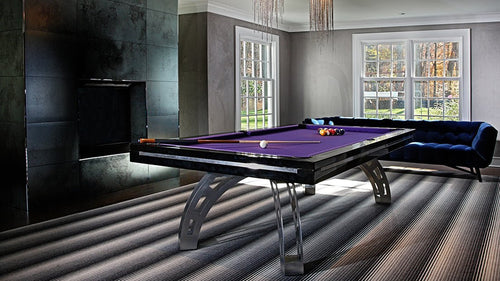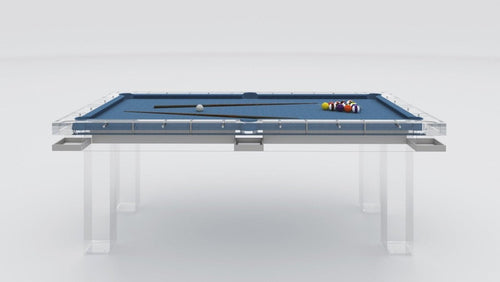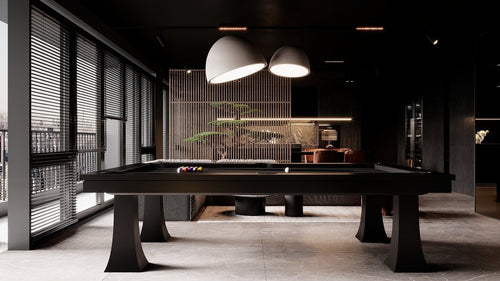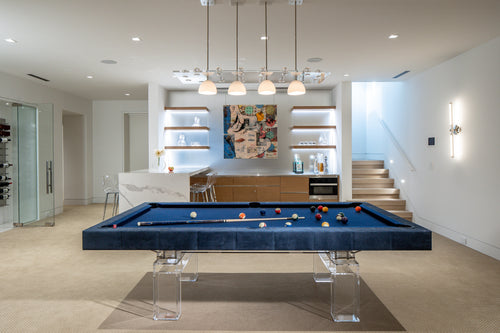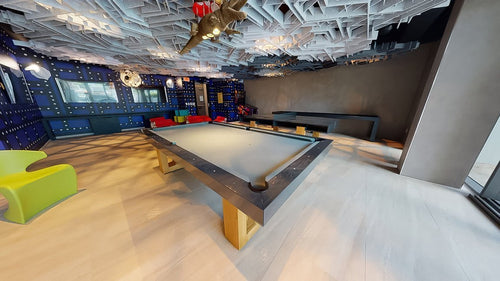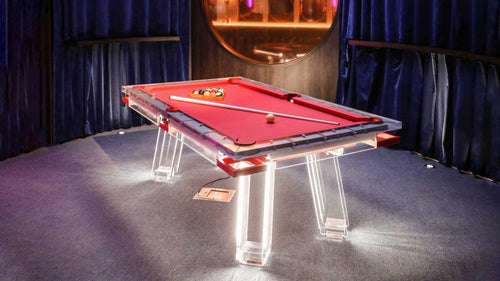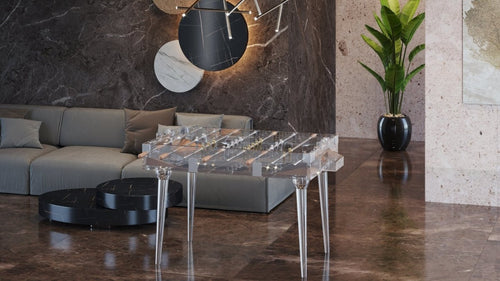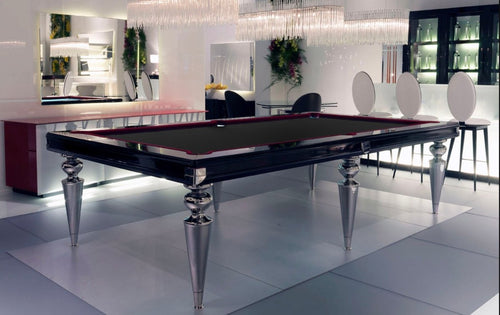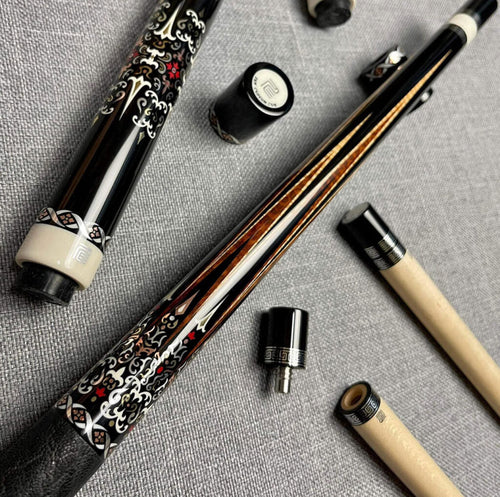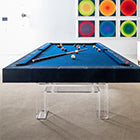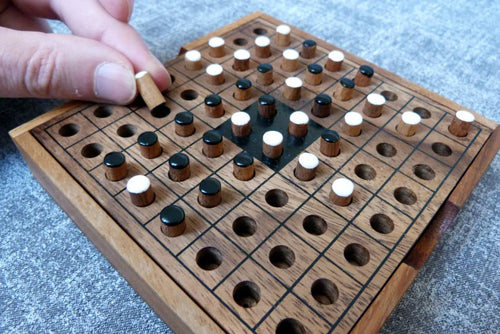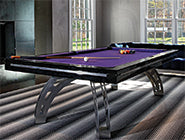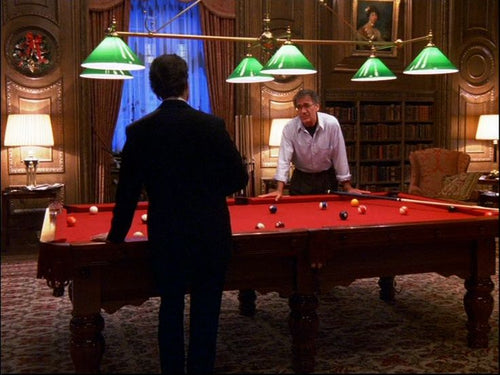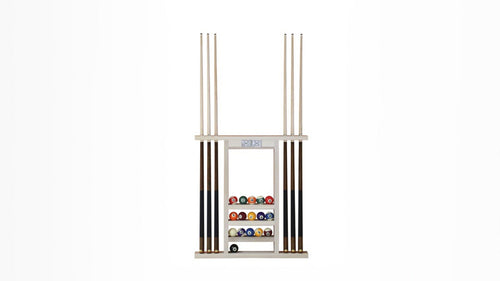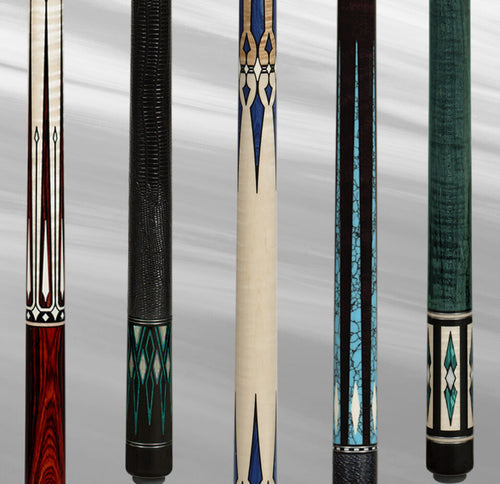Enjoy our modern designs
Estimated Read Time: 12 mins |
The table tennis bat—also known as a racket or paddle—is the most essential piece of equipment in the sport. Despite its simple appearance, the bat’s construction dramatically affects a player’s control, spin, and speed. This guide explores the technical components of a bat and how different materials influence gameplay across all skill levels.
Anatomy of a Table Tennis Bat

Blade
- Ply Count and Material: More plies and harder wood increase speed but reduce control. Beginners often use three-ply soft wood for better feel, while advanced players may prefer seven-ply blades with carbon fiber layers for added speed.
- Shape and Thickness: Blades must be of continuous and even thickness, though size and weight are not regulated.
Rubbers
- Surface: Reversed pimples (pips-in) are most common, offering a smooth, grippy surface ideal for spin.
- Sponge Layer: Situated beneath the rubber, this layer ranges from 1.0mm to 2.5mm in thickness. Thicker sponges provide more speed; thinner ones offer better control.
- Color and Finish: One side of the bat must be bright red, the other black. Both surfaces must be matt, and the rubber should extend to the blade’s edge, excluding the area near the handle.
Types of Rubbers and Their Characteristics
Pips-In (Inverted)
The most widely used rubber type, pips-in rubbers have the smooth side facing out. They allow high spin production and are ideal for offensive play.
Antispin (Antis)
Featuring a low-grip surface and slow sponge, antispin rubbers reverse the opponent’s spin and neutralize aggressive shots. They’re mainly used in defensive strategies and are more common at amateur levels.
Pips-Out
- Short Pips (<1mm): Fast and low-spin, suitable for flat hits and aggressive blocking.
- Mid Pips (1–1.5mm): A middle ground offering moderate disruption and increased stability, often used on the backhand.
- Long Pips (>1.5mm): High spin reversal with a disruptive effect. These are harder to control but can confuse opponents by reversing topspin into backspin.
How Equipment Affects Gameplay
- Speed: Faster blades and thicker sponges increase pace.
- Spin: Grippy rubbers paired with reactive sponges generate more spin.
- Control: Softer materials help stabilize shots and reduce unforced errors.
- Strategy: Offensive players lean toward fast, spin-heavy setups; defensive players benefit from rubbers that reduce or reverse spin.
Choosing the Right Bat
For beginners, the recommended setup includes a five-ply all-round blade with pips-in rubbers and a 1.5mm sponge thickness. This setup offers a forgiving balance of control and spin, helping players develop proper stroke mechanics. Consulting a coach or specialist retailer can provide personalized recommendations based on individual playing styles.
Regulations and Fair Play
- Bats may be any size, shape, or weight.
- Blades must remain untreated—no physical or chemical modifications are allowed.
- Players must present their racket to the umpire and opponent before matches or when changing rackets.
- If a player suspects illegal rubbers, they may request an inspection.
Conclusion
A well-chosen table tennis bat is a tailored extension of a player's technique and strategy. From rubber types to blade materials, each component plays a crucial role in defining gameplay style. Understanding these elements empowers players to make informed decisions that enhance their skills and competitive performance.


